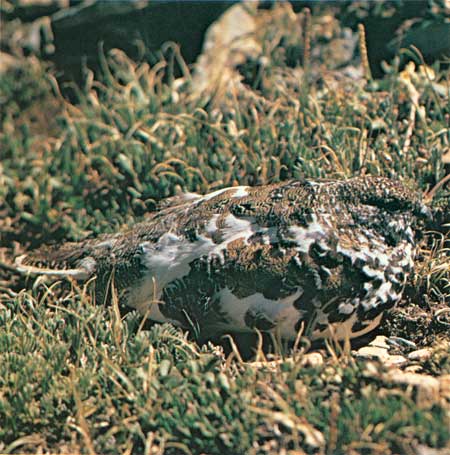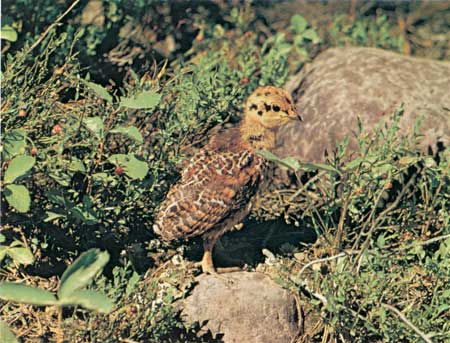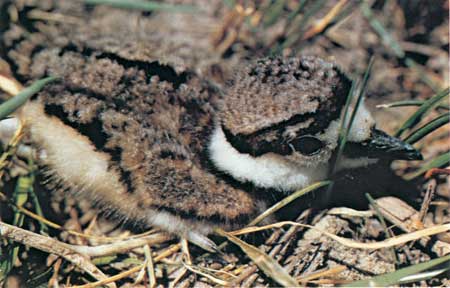|
GLACIER National Park |
 |
|
Protective Coloration To escape extermination, each species must in some manner foil its enemies. Protective coloration is one of the more common adaptations helping to do this. Most animals resemble their environment to some extent. The conspicuous markings of some, like the bitter-tasting monarch butterfly or the striped skunk, seem to function as a warning to prospective predators that it is in their best interest to look elsewhere for a meal. Some animals, such as the white-tailed ptarmigan and the snowshoe hare, have seasonal changes in plumage or pelage, wearing white in winter and brown in summer. Even predators, such as longtail and shorttail weasels, benefit from seasonal camouflage. Protective coloration makes them less noticeable to prey species and to larger predators. Many insects, too, change coloration with the season. Bright green grasshoppers of early summer become more brown with each molt, matching the changes in the surrounding vegetation. Obliterative shading is especially important to animals that frequent more than one habitat. Seen from above, turtles match their dark background; from below, because of their lighter underbody shading they blend into the bright skylight. Disruptive coloration aids in breaking up an animal's outline. Butterflies and moths commonly have disruptive wing markings. The distinctive shapes of eyes can be concealed. Eye coloration may mimic body color—as in the green katydid—or the eye may continue disruptive body markings. Ground-nesting birds are especially vulnerable to attack. Their eggs tend to be heavily blotched with earthy colors, making them less conspicuous. Chicks also carry these disruptive colorations on natal down. Most mammals, with coats of brown or gray, are inconspicious when motionless. Deer fawns are endowed with speckled coats, mimicking the sun-flecked forest floor; this disruptive coloration, coupled with absence of scent and their instinctive "freezing" behavior, makes it difficult for predators to detect them. The whitetail deer not only uses its white "flag" to warn others in the herd of danger; it also allows a pursuing predator to use it as a target. When the tail is suddenly dropped—abruptly obliterating the bright white patch—the deer seems to disappear into its dim surroundings. Since overly conspicuous animals are prone to predation, natural selection favors development of appropriate camouflage.  For such ground-dwelling birds as the white-tailed ptarmigan, camouflage is an important survival adaptation. The ptarmigan changes its plumage to match its surroundings: it is white in winter, speckled in summer. Moving slowly and refraining from flight, it is less likely than more-active birds to be detected by sharp-eyed, motion-conscious predators.  Birds that when hatched are covered with down and are able to move about freely are called precocial. They are less dependent upon their parents than are altricial young, which are naked and helpless when they hatch; but they must rely heavily on a resemblance to their surroundings—for survival during their first flightless—weeks. This spruce grouse chick, which blends into its sunflecked forest-floor habitat, is en example of a precocial bird.  The bold disruptive pattern of the kilideer chick's plumage helps this precocial bird avoid detection in its open-prairie environment. This adaptation, coupled with the chick's instinct to freeze at the approach of danger, ensures that enough young will survive to perpetuate the species. |

|

|
|
|
|
Last Modified: Sat, Nov 4 2006 10:00:00 pm PST |


